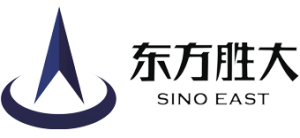The angle steel can be composed of various stress-bearing components according to the different needs of the structure, and can also be used as a connection between the components. Widely used in various building structures and engineering structures, such as beams, bridges, transmission towers, lifting and transporting machinery, ships, industrial furnaces, reaction towers, container racks, cable trench supports, power piping, busbar support installation, and warehouses Shelves etc.
Angle steel is a carbon structural steel for construction, which is a section steel with a simple section, mainly used for metal components and the frame of a workshop. In use, it is required to have good weldability, plastic deformation performance and certain mechanical strength. The raw material billet for producing angle steel is low carbon square billet, and the finished angle steel is delivered in hot-rolled, normalized or hot-rolled state.
2 to 20, the specifications of angle steel are also large and small, but the conventional standard of domestic angle steel is the same. The size of the angle steel is mainly determined according to the edge used. Relatively large angle steel, the smaller the side length is the medium-sized angle steel, and the side length less than 5 cm is the small angle steel. When selecting angle steel, the corresponding specifications should also be selected according to the actual situation. Moreover, it is necessary to observe whether the surface of the angle steel is flawed. The quality is good if the surface has no flaws. At the same time, it is also necessary to pay attention to the thickness of the angle steel to meet the requirements.
The surface quality of angle steel is specified in the standard, and it is generally required that there should be no harmful defects in use, such as delamination, scarring, cracks, etc.
The allowable range of angle steel geometric deviation is also specified in the standard, generally including curvature, side width, side thickness, top angle, theoretical weight, etc., and it is stipulated that the angle steel must not have significant twist.
The surface quality of angle steel is specified in the standard, and it is generally required that there should be no harmful defects in use, such as delamination, scarring, cracks, etc.
The allowable range of angle steel geometric deviation is also specified in the standard, generally including curvature, side width, side thickness, top angle, theoretical weight, etc., and it is stipulated that the angle steel must not have significant twist.
